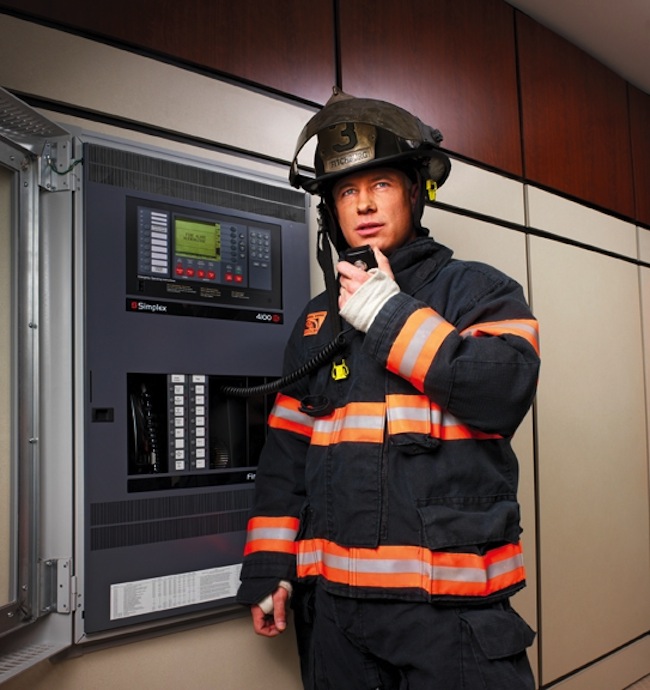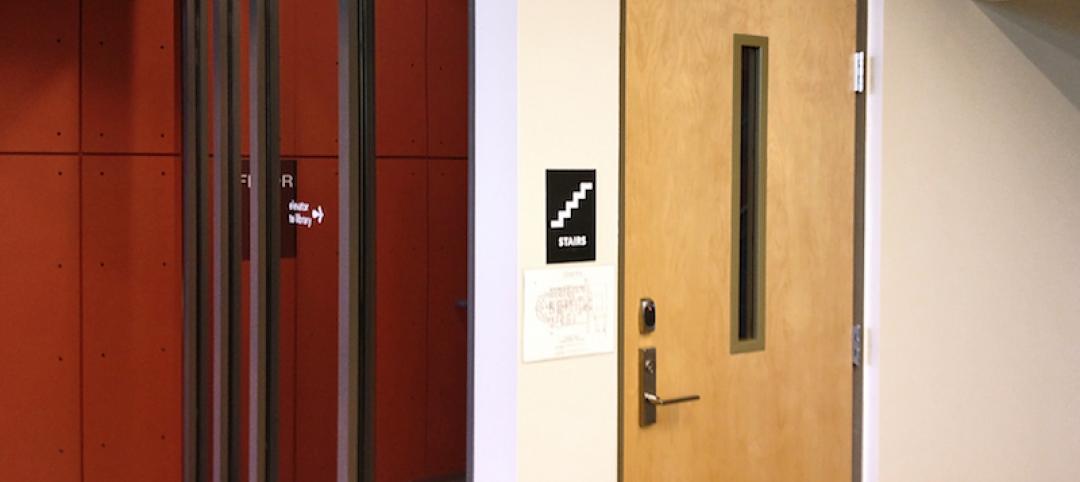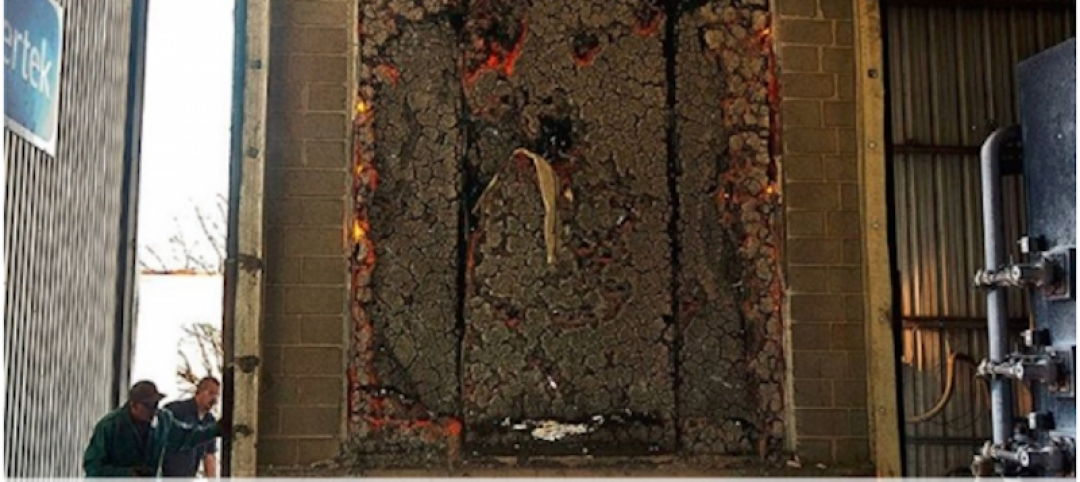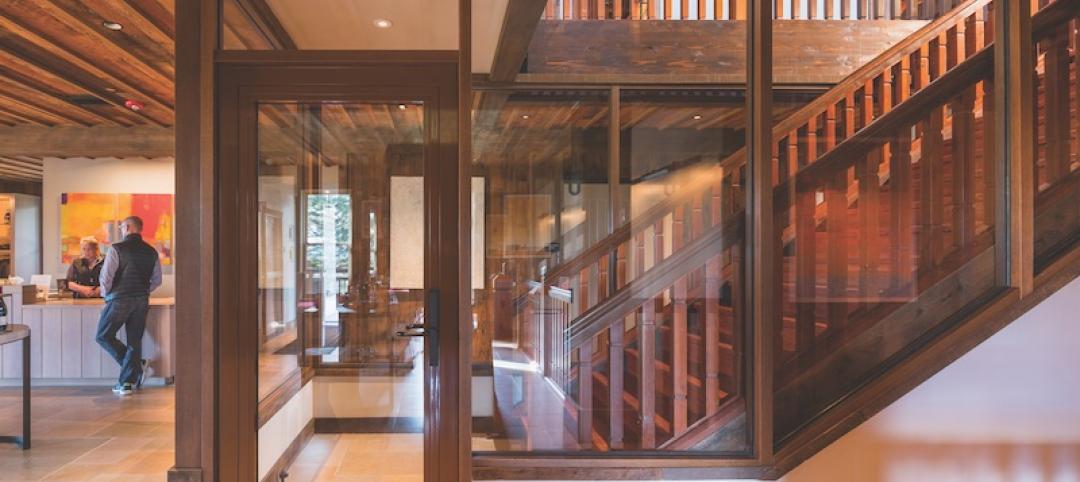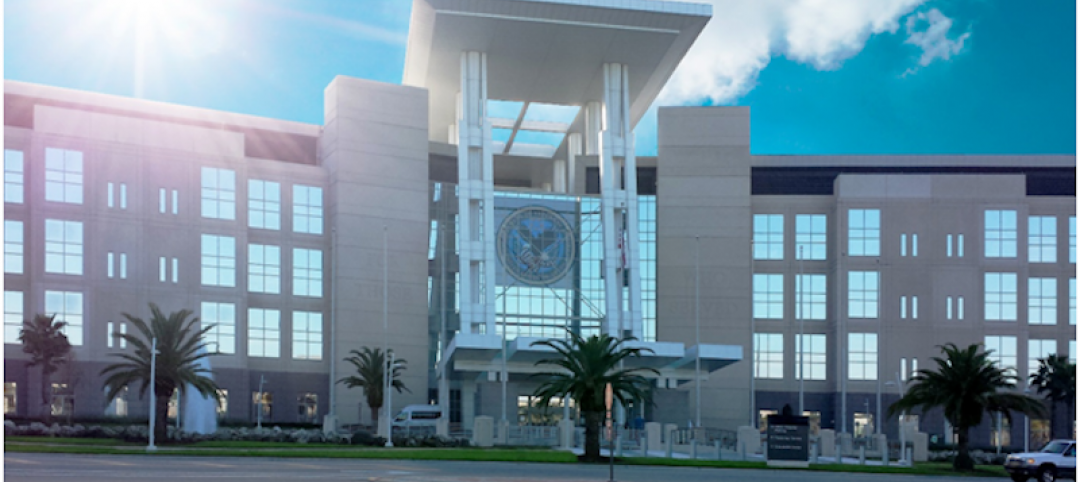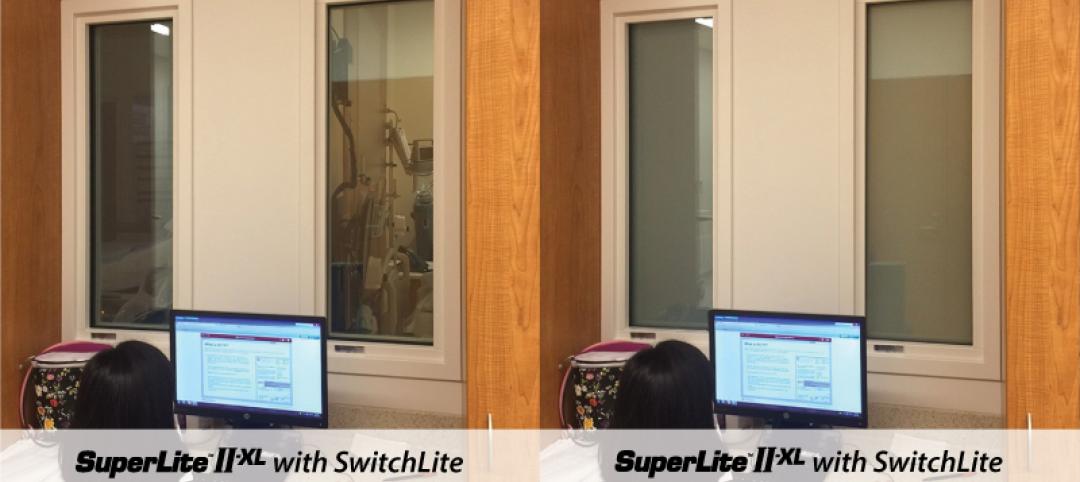Planning for fire and life safety in existing and new buildings is based on three major components; if one is missing, the form is incomplete.
One component is an understanding of potential threats to occupants and the building itself. The second component is building design, including engineered systems and defensive architectural design that address those threats to the proper extent. The third is the operational plan––a body of knowledge and accounting of what-if scenarios informed by the other two components.
In every project, a variety of challenges can inhibit this important work, according to the Whole Building Design Guide (WBDG) Secure/Safe Committee, a program of the National Institute of Building Sciences. These include the tension between architectural design preferences and the need for perimeter security, structural hardening, access control, and standoff requirements. Three concurrent challenges include cost, impacts on the surrounding environment, and “resistance from the occupants due to impacts on operations, productivity, and accessibility.”
Finding a solution to these different conditions is not easy. “The establishment of an integrated design process, where all of the design team members understand each other’s goals, will lead to the development of a solution which addresses all of the requirements,” according to the WBDG Secure/Safe Committee.
Learning objectives
After reading this article, you should be able to:
+ EXPLAIN how system installation and building operations impact the effectiveness of the fire-protection and life safety scheme.
+ DISCUSS the principles of safety and security to be considered in the planning stages of new construction and renovation projects.
+ LIST the basic systems available and decision criteria for emergency lighting, voice communication, and security.
+ DESCRIBE typical integrated fire and life safety protection systems and the reasons for their use.
Threat analysis typically precedes schematic design. In the case of One World Trade Center, the 1,776-foot-tall tower was originally designed without sufficient protection against one unlikely but potentially devastating threat: vehicle-borne explosives. Yet it was “the most important consideration” in anti-terror structural design, said the Federal Emergency Management Agency in calling for a redesign.
The original Freedom Tower included an arcade base with exposed columns located a few steps from a major roadway. In response to concerns expressed by state officials, Skidmore, Owings & Merrill changed the final redesign by moving the perimeter about 50 feet away from the street and creating a fortified base with no colonnade, rising to about 150 feet. Egress stairwells, surrounded by reinforced concrete, will be pressurized to prevent smoke migration, and a separate set of entries and stairs will accommodate emergency services. Fire sprinklers will be fully redundant, and radio repeaters are being included to strengthen communication ability during an emergency.
The design work alone added tens of millions to the total project cost. Was it worth it? Life safety experts say yes, but only time will tell.
Principles of safety and security
According to the WBDG committee, there are four basic principles of all-hazard building design: 1) plan for fire protection; 2) ensure occupant safety and health; 3) resist natural hazards; and 4) provide security for building occupants and assets.
Planning for fire protection. Fire protection planning for a building involves a “systems approach for addressing the hazard of fire,” says Jim Tidwell, National Director of Fire Service Activities for the International Code Council. Through a systems design approach, the Building Team seeks to analyze all of the building’s components as a total building fire safety system package.
Fire and life safety planning is more than just threat analysis, says Jason D. Reid, founder of National Life Safety Group, a Toronto-based consultant on emergency management and operational continuity. Fire-safety plans should also include detailed information on building systems for use by site managers, including procedures for operational failures during emergencies. Armed with floor plans showing where to find HVAC, electric, and sprinkler system isolation points, the building operator can reduce the impact of fires on building operations and value. This knowledge is valuable for firefighters and the safety of occupants.
Click here to read the exclusive sidebar to this article, "Integrated security systems—replacing legacy systems."
Using the Building Team’s toolset, including computer-aided design and building information modeling, a life safety professional can create a well-documented fire safety plan. Authorities can use the plan to conduct “virtual tours” of the premises to identify hazard areas, isolation points, and any special challenges for emergency response or evacuation.
Ensuring occupant safety and health. This includes fire and life safety hazards, plus run-of-the-mill potential for injuries and illnesses. “These can usually be prevented by measures that take into account issues such as indoor air quality, electrical safety, fall protection, ergonomics, and accident prevention,” says the WBDG committee.
A special case for occupant safety is in hospitals and other acute-care settings, as well as nursing homes. “In these settings, total evacuation of all occupants is impractical because some occupants may not have time to evacuate or may lack the physical or mental capacity to exit the building without help,” says Chris Jelenewicz, PE, Engineering Program Manager with the Society of Fire Protection Engineers (SFPE), Bethesda, Md.
In such cases, rather than moving patients in an emergency, hospitals employ a defend-in-place or protect-in-place strategy, says Robert Solomon, PE, Division Manager for Building and Life Safety Codes with the National Fire Protection Association, Quincy, Mass. If possible, occupants should remain in their rooms. They may be relocated as needed to areas of refuge behind smoke barrier walls. If necessary, occupants can be relocated to a lower floor or even outside the building, should conditions warrant such action.
Protecting against natural hazards. According to NIBS, federal outlays for buildings damaged by earthquakes, hurricanes, floods, and other natural forces exceed $35 billion a year. If the country’s buildings properly anticipated the risk associated with major natural hazards, these costs could be considerably less, says the WBDG committee.
For building design, this means careful detailing and “architectural hardening” beyond code requirements for building systems and assemblies that take the brunt of the force. Little mistakes are magnified under the massive forces of seismic and weather events. Connection details, for example, are often the “weak link in the structural chain,” often leading to partial or total building failure, says Jack D. Burleson, AIA, CSI, CBO, the ICC’s Regional Manager for Government Relations.
The effect of poor design and construction techniques is amply documented. Surveys of hurricane-related damage by the Institute of Business & Home Safety have shown that incorrect fastener choice and attachment methods are the leading causes of envelope failure for metal sheathing. Progressive roof failure and interior damage are often initiated by detailing of eaves and soffits, adds Burleson.
For other key building components, including structural framing, anchor bolts, sheathing, and fenestration, Building Teams should select only those products “rated for the appropriate loads and impact resistance for that location and installed according to the manufacturers’ instructions,” says John Ingargiola, PE, Senior Engineer with the Federal Emergency Management Agency, Washington D.C.
The same is true of fenestration. FEMA’s National Earthquake Hazards Reduction Program (NEHRP) set forth authoritative guidelines in its NEHRP Recommended Provisions for Seismic Regulations for New Buildings and Other Structures. Published over a decade ago, the document focuses on glass fallout caused by structural racking and similar life safety issues during seismic events. Adopted by model building codes, the NEHRP provisions have highlighted the suitability of annealed and heat-strengthened laminated glass for resisting seismic forces.
According to experts in glazing and life safety, glass can be made safer by using a flexible frame to accommodate racking as well as proper dimensions for glass-to-frame clearances. The use of bottom and side setting blocks as well as silicone glazing have also been shown to improve seismic performance. Many manufacturers recommend laminated glass with a minimum interlayer (0.030 inch or greater) in single-lite or insulated glass unit applications.
Providing security to occupants and assets. Today’s safe building designs must include more countermeasures against attacks by human aggressors. These include basic control of premises access, methods for early detection, and response measures.
“Hiring full-time guards is only one of many options for dealing with security monitoring activities. So are video cameras and the use of other staff,” concluded an Institute of Education Sciences task force led by Steven King of the Wyoming Department of Education. “The point is that, by brainstorming a range of possible countermeasure solutions, you can come up with several effective ways to monitor your workplace. How it is done is secondary––and completely up to the organization and its unique requirements.”
Understanding the basic building blocks of safety standards
Fire and life safety depends to a large extent on procedures for evacuation and adequate means of egress. State and local fire codes, along with OSHA standards for workplace safety and health, generally refer to NFPA standards.
An important distinction outlined in NFPA 101 – Life Safety Code section 7.9 defines the difference between exit access and exit discharge. Access, in this context, refers to lanes, paths, and stairs that lead to an exit door, while discharge refers to lanes that lead from the building to a public right-of-way. Either way, these pathways must be unobstructed and well illuminated.
Emergency lighting and signage requirements differ for access and discharge exit ways. Illuminating power is specifically dictated by code, usually referencing NFPA 101 section 7.9 or the International Building Code (IBC) section 1006.4. The standards set a minimum average of one foot-candle and a maximum of 40 times the minimum. The minimum/maximum ratio eliminates bright-to-dark patches that can strain the eye and make egress more difficult.
The most visible and recognizable type of emergency lighting system is the wall pack, usually a cluster of flood lamps that may also include an illuminated exit sign powered by a battery or backup generators that can be triggered by detection of a power outage or an emergency alarm. Where aesthetics are a project’s primary concern, wall packs may be considered unsightly. With early planning and careful research into codes and available technology, the design team can integrate emergency general illumination (egress illumination) into the primary lighting system.
Backup power is also provided for emergency general illumination, typically through the facility’s primary lighting systems. Often these systems do not by themselves meet the requirements for illuminating means of egress; in fact, they are often dimmer than normal when running on backup power, but they can serve other important functions. In hospitals, for instance, lighting and electrical power are essential to patient care; in high-risk facilities such as banks or correctional facilities, electricity for security systems is essential.
“Emergency lighting luminaires are often the last thought in the lighting design,” says architect Dale Wilson, AIA, Project Manager at Aon Fire Protection Engineering, Glenview, Ill. “This can create problems with the placement of fixtures as they relate to the surrounding room and egress environment.” To be properly effective, the emergency illumination system should be considered as early in the planning phase as possible.
Thorough testing of the systems on site, which may be required by the authorities having jurisdiction (AHJ), is also recommended. “Although it may be possible to design, locate, and simulate the effects of emergency lighting in a particular design, best practices should always include testing the systems prior to allowing occupancy of a structure,” says Wilson. “Post-occupancy testing should be routine.”
Egress lighting options include foot lamps or LED strips near the floor level, sometimes concealed under a floated wall or within the design of the wall finish. In fact, many codes now require that exit signage be placed at a similar height, just above floor level, because smoke often obscures exit signage as it rises.
Many illuminated exit signs use LED sources, which increase their between-maintenance spans and life spans. As for light sources, LEDs work well for emergency pathway lighting, as the lumen output of the latest LED sources is competitive with halogen and other options. What’s more, UL and other testing agencies are now listing certain photoluminescent materials as acceptable for use in exit signs and egress path-marking systems, paving the way for systems that are independent of electrical power. For battery-powered emergency fixtures, many building owners prefer nickel metal hydride (NiMH) batteries, which have a long life and high efficiency.
Central and integrated systems
Digital is also the preferred system type for a variety of other fire-protection and life safety systems. Digital, addressable devices enable facility managers to quickly pinpoint an activated device’s location and determine whether an emergency response is in order.
The integrated systems also ease the installation and programmability of the central panel and associated components, including pull stations, horns, strobes, gas detection devices, sprinklers, and suppression equipment. All these point devices and systems can be tied back to the original panel, with room for adding more as the facility grows.
While the integration of fire protection and voice evacuation into one centralized system is not new, the latest technology has moved beyond fire alarm/voice evacuation integration to a full-blown emergency communications system (ECS), offering significantly higher levels of protection. The ECS––or mass notification system––can be programmed to supersede the fire alarm, which is required by the 2010 edition of National Fire Protection Association (NFPA) 72: National Fire Alarm & Signaling Code.
This approach is helpful in a variety of scenarios, including adverse weather events, chemical leaks, or bomb threats. For example, if a shooter has been spotted on, say, a university campus, pulling a fire alarm would have the unwanted effect of concentrating building occupants into small evacuation areas that might give the attacker easier access to potential victims. “An ECS allows facilities to adjust their egress paths or evacuate horizontally to other parts of the building, making the evacuation paths less predictable and less vulnerable,” says Carter Rierson, President, Best Defense Security & Fire Protection, Waunakee, Wis. “ECS also allows facilities staff to immediately alert the facility of other emergencies where a lockdown or shelter-in-place is required.”
At this time, neither NFPA 101 nor the IBC requires that facilities install an ECS; only U.S. Department of Defense buildings have such a mandate. Some AHJs may require an ECS, but usually it’s the Building Team that elects for the more flexible technology.
In these cases, a risk analysis should be conducted to “characterize the likelihood, vulnerability, and magnitude of incidents associated with natural, technological, and manmade disasters and other emergencies,” says Jack Poole, PE, Principal, Poole Fire Protection, Olathe, Kan. Then the team should determine “how to best communicate the ‘real-time’ emergency notification information, so the emergency communication system can be properly designed, installed, and tested following a performance-based approach.”
Improved voice technology
Digital technology is also improving voice evacuation technology. While an analog signal decreases in strength and integrity as it travels across the transmission distance and mixes with background noise, digital signals are better at maintaining sound quality. Digital amplifiers require smaller cabinets and produce less heat than their analog counterparts, and digital signal processing can be networked to multiple panels at remote locations, which decreases installation costs. Voice messages can be recorded at a computer workstation, rather than by booking time at a local sound studio.
“Custom messages can be made using WAV files and edited with audio software to ensure the sound quality needed to provide crisp, clear messages for the target audience to understand,” explains Duane Hannasch, SET, President, Fire Alarm Control Systems, San Antonio, Texas. “In addition, the alert tones can be recorded at a higher level to meet the required sound pressure levels while not subjecting the voice message to distortion. The messages can also be downloaded to any or all remote voice panels, allowing for redundancy in the event of a failure of the main panel.”
In addition, audio software programs are available to help with the design and placement of voice evacuation systems. By entering such variables as room size, interior finish materials, and large objects in the room, the software determines where to place the speakers to achieve the required sound pressure level, or SPL.
“Simply put, if you cannot understand the instructions, or worse, if you misunderstand them, then the system has failed,” says Mark Simpson, CET, a certified system installer with Syracuse Time & Alarm Co., Syracuse, N.Y. He points out that certain architectural features, such as varying ceiling heights, irregular walls, and sound-reflecting finish materials, can make the transmission of quality audio difficult.
In mathematical and acoustical terms, intelligibility means that the speaker signal, in decibels and watts, is correctly balanced with the characteristics of the room. In states where intelligibility is required, NFPA 72’s Annex D on Speech Intelligibility instructs when, where, and how to test for speech intelligibility.
Simply turning up the volume can cause distortion, and may not help to ensure that the broadcast messages are heard. “It is always better to have more speakers at a lower wattage setting than a few speakers at the top of their audio level blasting an incoherent message,” notes Bob Stieb, Sales Engineer with fire systems installer 3S Inc., Harrison, Ohio
“By defining the intelligibility requirements up front, and achieving agreement with the local authority ahead of time, using a conservative approach of many speakers at low wattage, and some guidelines regarding the allowable change is sound between speakers, one has the best chance of achieving the required audibility and intelligibility,” states Michael J. Knoras, Jr., PE, Project Manager, Aon Fire Protection Engineering.
“Even if the requirements aren’t met with the planned design, by using a conservative approach, you have the best chance of meeting them with simple speaker wattage adjustments in the field, rather than a redesign of an installed system,” he says.
Voice evacuation and ECS systems offer a number of other advancements, including improved connectivity, scalability, integration, modularity, and signal transmission. According to Knoras, who serves on NFPA’s technical committee for notification appliances and as an executive committee member for the SFPE’s Greater Atlanta Chapter, the newest systems are more accurately sized for their anticipated local load, which allows them to use lower-power remote amplifiers.
By taking advantage of the latest professional audio market advances, says Knoras, some cutting-edge products are providing networks of digital processors, ambient noise-monitoring stations, and passive and active speaker arrays to create highly intelligible systems in very harsh acoustical environments. The directional speaker arrays can focus the sound along a very narrow path, thereby minimizing the problem of sound bouncing off adjacent surfaces and reducing intelligibility.
“While it would seem these higher-end audio systems would be utilized everywhere, there is a cost associated with this technology, and it is many times the cost of utilizing a voice fire alarm system, or even a dedicated mass-notification voice system,” says Knoras. “However, for those critical and challenging acoustical areas––such as underground and outdoor transportation terminals––the cost of fewer, highly directional speakers, and the ability to direct the sound toward the occupants and away from surfaces which might reflect the sound and affect the message, make the cost worthwhile.”
Depending on the facility type and locale, area-of-rescue-assistance (ARA) communication systems (also known as emergency phones) may be required by the life safety system. Both the IBC and NFPA’s Life Safety Code direct where these systems should be installed. Knoras recommends that the system’s wires and cables be installed in a metallic raceway with a dedicated source of backup power. If necessary, the device should be weatherproof and vandalproof.
Fire detection and alerts
One noteworthy development with fire alarm systems is a growing selection of medium-sized systems. In the past, specifiers typically had to choose between a very basic panel or a full-blown (and pricey) top-of-the-line system. Today’s medium-sized panels generally offer 200-plus addressable inputs, which can often be doubled by adding a module.
These mid-range systems are ideal for many commercial and institutional buildings. Some of them have custom message screens, offering a valuable form of additional communication. For example, an alarm detected in an active chemistry lab may display a message like this: “Warning! This room contains toxic chemicals. Use extreme caution.” Or the customized message could read, “Material safety data sheet is located in the post orders book above the panel. Provide this information to the first responders,” says Bill Van Loan, President of life safety and security firm Critical Systems, Marietta, Ga.
Smoke detectors. Today’s more advanced smoke detectors are now incorporating multiple types of detection all in one device. A typical detector might include photoelectric, ionization, heat, and carbon dioxide detection. However, fire-alarm planner Mark Popkowski, Owner of Modern System Concepts, Houston, points out that these products are often proprietary, so buyer beware.
Fire suppression systems. When it comes to fire suppression, the industry has introduced new types of suppressants and improved delivery systems. For example, a dual-pipe, water, and nitrogen mix delivers a fine, high-velocity water mist to envelop, cool, and ultimately control a fire, according to Knoras. Also, water mist systems are now covering greater surface areas, which are more effective at squelching fires.
CO2 is another option, but because these systems expel oxygen from the space, occupants must evacuate before the system can be activated, and precious seconds can be lost. This noisy type of system also significantly lowers the room temperature, so condensation settling on equipment in the room runs the risk of freezing.
Meanwhile, in response to the ban on halo-carbon production, the industry has figured out how to more effectively use air to suppress fires. “These systems control the amount of oxygen available in a room or space and maintain a level below which fire cannot exist,” explains Knoras. “These ‘hypoxic’ environments are normally utilized in highly sensitive or critical data centers and are akin to working at a high altitude, so there is little effect on persons working in the environment.”
Systems integration and installation
While the latest advances in fire protection and life safety equipment promise to delivery a higher level of quality and reliability, performance will only be realized if the systems are installed properly, using industry-proven best practices.
For instance, Stieb recommends proper safety training, system training, coordination with other trades, communicating with the end-user, maintaining project schedules, and kickoff meetings to review the project scope, confirm materials have been received, ask and answer project questions, and relay specific requirements and time frames.
Hannasch’s advice: “Use a fire protection engineer or engineered systems distributor who has the experience in emergency voice-communication and mass-notification systems, design software to provide modeling and anticipated sound pressure level (SPL) and Common Intelligibility Scale readings for the areas and building, and has the proper equipment for testing for SPL and intelligibility.”
Knoras cites communication between Building Team members and understanding everyone’s roles as the key to a successful project.
Consider this typical life safety project: The owner requires a code-compliant building, and the architect instructs the engineer to design the appropriate systems. “Then, all throughout the design process there is the dance of give-and-take as the architect tries to accommodate the devices and features the engineer insists are needed for these life safety system,” explains Knoras. “On the other hand, the engineer has to jump through hoops to try and preserve the aesthetic and functional integrity of the architect’s design.”
Once the dust clears, Knoras says, “The contractors enter the picture. Sure, they can provide and install the system exactly as the architect and engineer have designed, but it will cost a lot more to do it ‘their way’ rather than from an installation viewpoint.” At this point, it’s not uncommon for the architect and engineer to surrender control of the design to the contractor whose main priority is keeping costs down.
While the owner may end up with a code-compliant system, he or she may not be pleased with the looks of it. In order to ensure that the fire protection and life safety systems will be installed as designed, Knoras recommends involving as many of the parties as possible early on in the design process to work out how the full team’s expectations can be realized.
In case of emergency
A thoughtfully designed and installed fire and life safety system can offer a high level of protection, but ultimately it is the end-user who must be prepared for such an emergency.
The operations planning process begins with training. Building owners should seriously consider involving more than just their maintenance staff in training sessions on the correct use of life safety systems and equipment. Stieb recommends videotaping the session for future reference by new employees.
Knoras encourages facility managers to take periodic refresher courses. “If the service provider cannot meet these needs, get a new one,” he says. “It’s too important not to understand the systems protecting the building and its occupants.”
To assist with this, Critical Systems has developed what it calls a comprehensive graphic fire alarm and emergency systems inspection report (“Total Report”) that can also be used as an everyday operations document. The information is stored on a remote server, or cloud, and relayed to mobile smart devices to provide building managers, engineers, service technicians, and emergency response personnel with instant written and graphic information regarding the location of every component of the building’s protection systems, according to Van Loan.
Regularly scheduled drills are another important component of emergency preparedness. While fire codes do require emergency systems to be regularly tested, Hannasch discourages building owners from scheduling these tests during off-hours. On the contrary, building occupants need to take part in these drills to become familiar with the fire protection and life safety systems.
“Most people understand what it means when a fire alarm system activates and what they should do, but what about a weather emergency?” asks Knoras. “What if there is a bomb threat or civil unrest outside the building? These should all be covered in an emergency plan, communicated to the building population, and drills should be conducted with the actual emergency communication systems so people know what to expect.” +
--
Additional reading required for this course. To earn 1.0 AIA/CES learning units, study the full article carefully and take the exam posted at www.BDCnetwork.com/FireLifeSafety.
Related Stories
Sponsored | Fire-Rated Products | Jul 19, 2017
London fire shines spotlight on fire prevention, protection and education
As shocking as the Grenfell Tower fire was, it is not an isolated incident.
Sponsored | Fire-Rated Products | Jun 13, 2017
Fire resistive glass floors make a dramatic statement in Nashville’s historic neighborhood
SAFTI FIRST supplied a single glass unit comprised of non-slip rated Starphire tempered laminated Glass with 1/8” Non-Skid White Dots from Oldcastle insulated to custom SuperLite II-XL fire resistive glazing.
Sponsored | Fire-Rated Products | Jun 13, 2017
Hidden risks and costs of using sprinklers as an alternate to 1-2 hour fire resistive glazing
The ASTM E-119 test is the most stringent and most difficult test to pass for all fire rated glazing assemblies.
| Jun 5, 2017
Fire-rated frames deliver the natural look of wood
The TimberLine Series pairs a high-strength steel subframe with a wood-veneered metal cover cap to produce a slender fire-rated frame.
Sponsored | Fire-Rated Products | Mar 22, 2017
Fire resistive glazing systems provide architects, owners and envelope consultants assurance of documented performance
It may look like a regular window, but these advanced fire resistive glazing systems are recognized in the code as transparent walls because of its ability to block smoke, flames and significantly limit the passage of dangerous radiant heat.
Sponsored | | Nov 10, 2016
Fire-rated glazing replaces drywall partition to transform ‘almost unusable’ space into a ‘showstopper’
The space, which the firm hoped to use as a gathering place for employees and clients, had no access to daylight.
Sponsored | Fire-Rated Products | Nov 10, 2016
Truly transparent: Fire resistive butt-glazed walls up to 2 hours
SuperLite II-XLM is a fire resistive multi-laminate glass product that meets ASTM E-119/UL 263/NFPA 251 and CAN/ULC S101 up to 2 hours.
Sponsored | Fire-Rated Products | Nov 3, 2016
Fire rated switchable glass provides privacy and fire protection at the University of Chicago Medical Center
The University of Chicago Hospital Group reached out to Bill Zientarski of Hi-Performance Glazing Solutions and SAFTI FIRST’s architectural representative in Illinois for a solution that combined vision, privacy and fire protection in one glazed unit.


